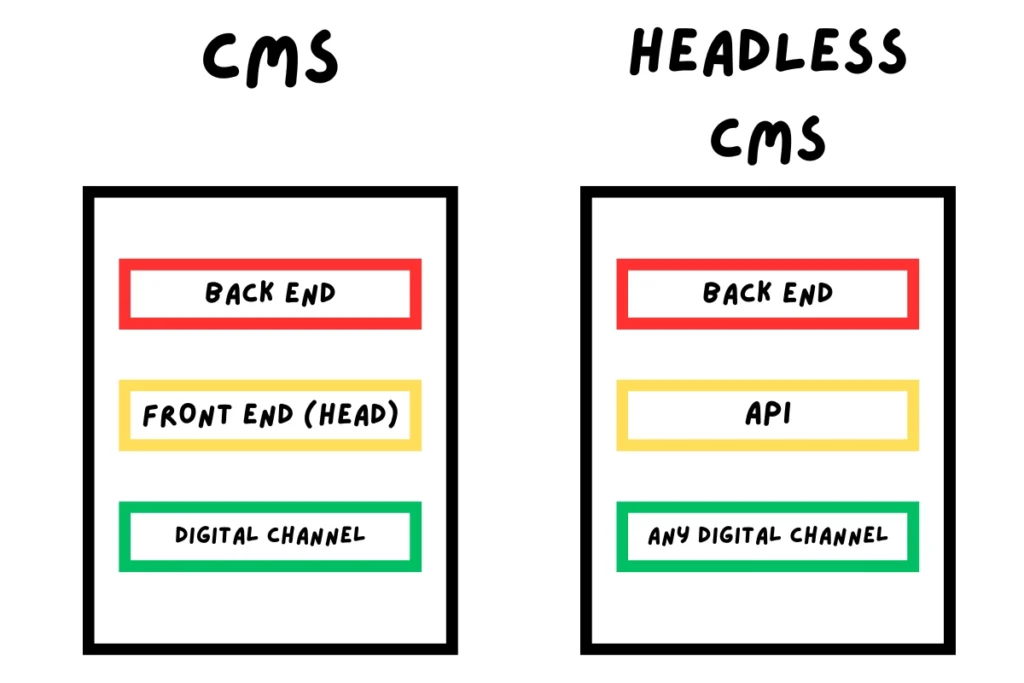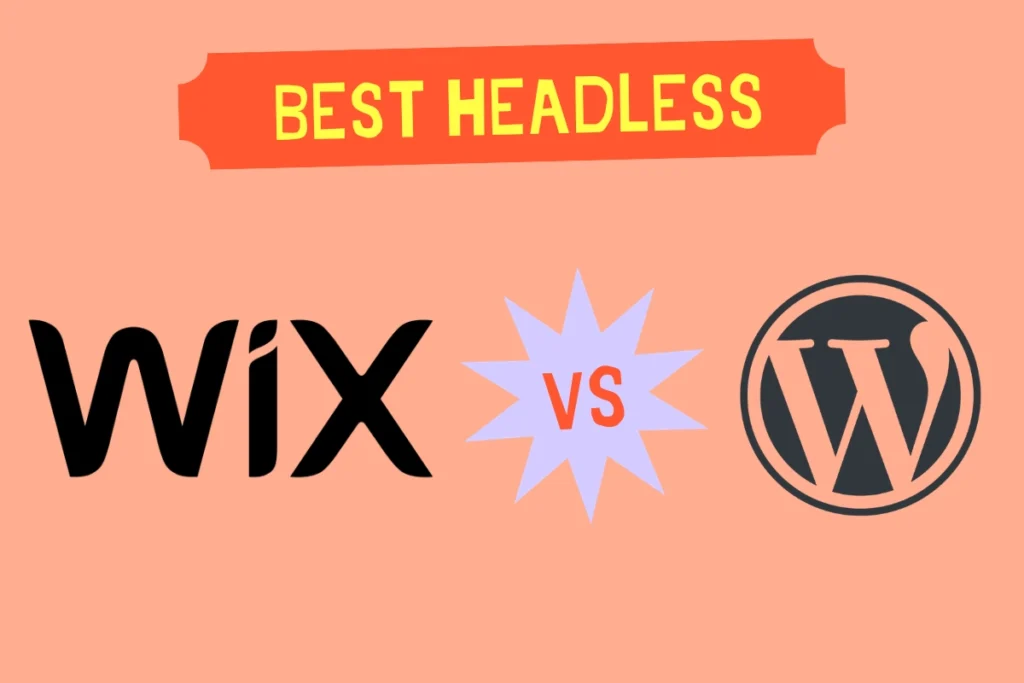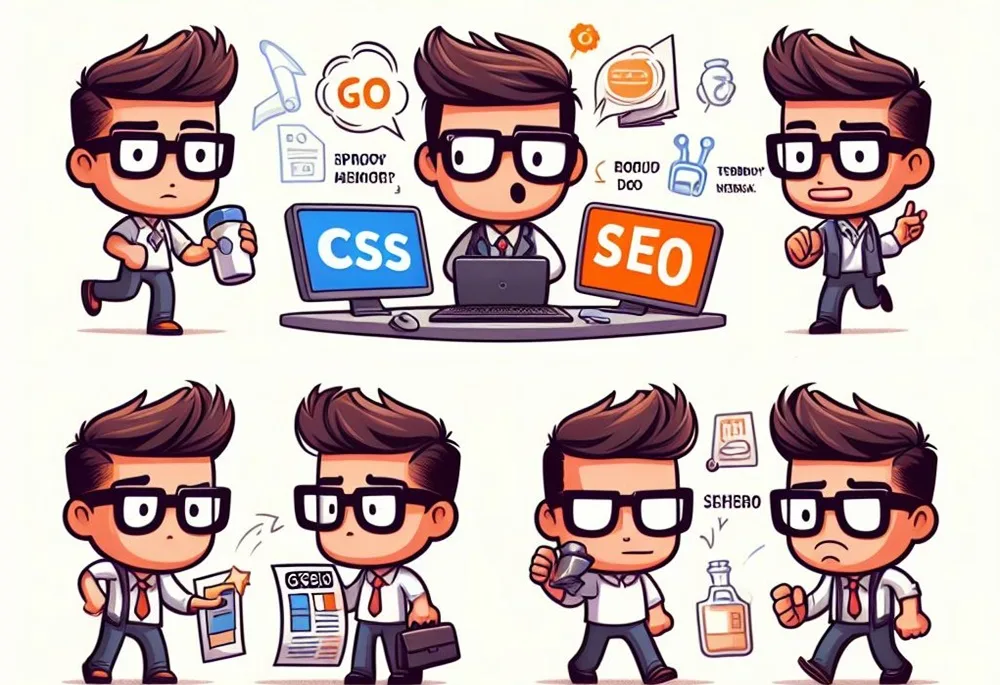Headless CMS SEO

Headless CMS SEO is an important aspect of a successful website. It can help boost your site’s visibility and ranking in search engine results pages (SERPs), driving more traffic to your site and ultimately increasing conversions.
As Headless CMSs become more popular, the need for specialized SEO practices that take advantage of their unique capabilities has grown.
In this guide, we will explain how to use SEO with Headless CMS, discuss the best practices to get the most out of your SEO efforts, and provide useful tips from experts in the field.
Table of Contents
What Is a Headless CMS?

A Headless Content Management System (CMS) is a modern web development tool that allows developers to create, manage, and distribute content via an API.
Unlike traditional CMSs, a headless CMS does not have a front-end, or “head,” hence the term “headless.”
This decoupled structure allows developers to deliver content to any platform or device while maintaining the back-end where the content is stored and managed.
This flexibility makes headless CMS an ideal choice for websites that need to deliver content across multiple platforms, such as web, mobile, IoT devices, and more.
What is a Headless CMS Good For?
A Headless CMS is particularly beneficial for businesses operating on multiple digital platforms due to its platform-agnostic nature.
It allows for seamless content distribution across various channels, including websites, apps, social media, and IoT devices, ensuring a consistent user experience.
This flexibility also extends to the development side, as it allows developers to use their preferred coding languages and frameworks.
Moreover, a Headless CMS provides an advantage in scalability. As your business grows and evolves, the CMS can adapt and grow with you, accommodating new platforms or technologies as they emerge.
Also, the decoupled structure of a Headless CMS can bolster security because the content management system and the website are separated.
This means that even if your website is compromised, your content system and stored data remain safe, as they are not directly linked to the website’s front end.
How Does SEO Work With a Headless CMS?
Since the CMS is decoupled from the presentation layer, developers have the freedom to implement SEO best practices in the way that best fits the project, without being constrained by the CMS.
For instance, they can easily customize metadata, and URLs, and incorporate schema markup for each platform where the content gets delivered, tailoring it to the specific SEO requirements.
Moreover, the high loading speed of sites managed by a headless CMS contributes to better SEO performance since page speed is a critical factor for search engine rankings.
Thus, a headless CMS allows businesses to optimize their content for search engines more efficiently and flexibly, potentially leading to improved visibility and higher traffic.
But there are also disadvantages:
with the decoupled architecture, there’s a risk of content duplication across multiple platforms, which could negatively impact SEO.
Additionally, since Headless CMSs do not have a built-in visual editor, non-technical users may find it challenging to use and create content without coding knowledge.
Not all SEOs and even developers are familiar with Headless CMS, which can limit its adoption, so business owners who hire an SEO company or have an in-house SEO team must ensure that they have experience with this type of CMS.
Lastly, the cost of implementing and maintaining a headless CMS is generally higher compared to traditional CMSs.
Examples of Headless CMS
Some of the most popular headless CMSs include:
WordPress (headless WordPress)
WIX Headless
Contentstack
Zesty
Craftcms
Hygraph
Cosmic
Cockpit
Contentful
These are just a few examples of headless CMSs. Each one has unique features and capabilities, so it is important to research and compare the different options available to you to find the best fit for your needs.
Want More Traffic?
Which Headless CMS is Best for SEO?

The best headless CMS for SEO will vary depending on the specific needs and goals of your website.
I love working with WordPress (this site is also built on WordPress), and there are some fantastic headless CMS options available, such as Wix Headless (as a former employee of Wix I am biased but trust me, it’s great), but the most important part is to try and fell which one is best for you.
For instance, Wix offers high-level security and exceptional design capabilities, while WordPress, on the other hand, provides greater flexibility and benefits from a thriving community.
In the end, it’s essential to consider your budget, technical capabilities, and content management needs when choosing a headless CMS for your business.
Headless CMS SEO Best Practices
The best practices for optimizing your website with a Headless CMS are similar to those of traditional SEO, but there are some key differences.
Nowadays holistic SEO approach encourages the use of a “crawlable” content structure that can reveal all the key SEO elements to search engines.
Here are some tips for getting the most out of your Headless CMS SEO efforts:
1. Invest in Content Modeling
The process of content modeling involves establishing the necessary content types, specifying the characteristics of each type, and determining their interrelationships.
Therefore, it’s important to invest in content modeling to ensure that your content is properly structured and indexed by search engines.
2. Use Relevant Metadata
Use relevant metadata title tags, and meta descriptions to ensure that your content is properly indexed and ranked by search engines.
3. Check Your Website’s Cached Version Often
Check the cached version of your website regularly to ensure that search engines are rendering and indexing it correctly.
This will help you identify any issues that may be preventing your content from being rendered properly, which can lead to a drop in rankings.
4. Use Structured Data
For search engines to properly identify your content, you need to use properly structured data.
This includes using schema markup and microdata tags to give search engines more information about the content on your site.
5. Implement CDN
Implement a content delivery network (CDN) to ensure that your content is delivered quickly and efficiently.
This will improve the user experience your visitors have when viewing your content, as well as help search engines crawl and index your content more quickly.
Implementing CDN is always SEO-friendly in my opinion and therefore should be done as part of an SEO services or SEO consulting project.
6. Include New Pages on XML Sitemap
Ensuring that all new pages are included in the XML sitemap is fundamental to effective SEO.
An XML sitemap serves as a roadmap for search engines, guiding them through all the essential pages on your website.
Whenever you add a new page to your website, it should be included in the XML sitemap immediately, but with headless CMSs, this process may not be automatic.
In such cases, make sure to manually add the new page to the sitemap or work on an in-house modification, which automatically does this for you.
7. Use Keywords Wisely
Make sure that you’re using relevant keywords in the title tags and meta descriptions for your content.
This will help search engines to better understand what your content is about, thus boosting its ranking.
8. Optimize for Mobile
Optimize your content for mobile devices to ensure that it’s easily accessible to users on any device.
This includes ensuring that your content is responsive and formatted correctly for mobile devices.
It is crucial to always follow this recommendation, not just in the case of using headless CMS, but in this case, it will have an even bigger impact.
9. Optimized Your Images
Make sure that your images have relevant filenames and ALT tags so that they can be properly indexed by search engines.
This will help ensure that your images rank higher in search engine results.
10. Use Friendly URLs
Use friendly URLs that are easy for search engines to understand and crawl.
This will help ensure that your content is properly indexed and ranked in the SERPs.
Following these tips will help that your content is properly indexed and ranked by search engines, thus helping to boost its visibility in the SERPs.
11. Make sure Your heading Hierarchy is Properly Structured
Make sure that you are making use of heading tags (H1, H2, etc.) to structure your content and make it easier for search engines to understand.
Properly structured heading tags will help ensure that your content is properly indexed and ranked in the SERPs.
12. Avoid Insecure (Mixed) Content
Avoid displaying insecure content on your website, as this can affect the security of your site as well as negatively impact its search engine rankings.
13. User Experience Important Than Ever
Ensure that your website offers a positive user experience to visitors.
Having a fast-loading, well-structured website will help ensure that your content is properly indexed and ranked in the SERPs.
Make sure you check your website with Lighthouse, Pingdom, GTmetrix, and similar tools to measure performance and fix any issues.
14. Build Links to improve Site Crawlabiity
Building links to important pages on your website, such as the homepage or content pages, can help improve its crawlability and help it be better indexed by search engines.
By building links from high authority links like those we offer in our niche edits service, you can improve your website’s crawl ability and thus its ranking in the SERPs.
Is Headless CMS Good for SEO?
There is no definitive answer as to whether headless CMS is good for SEO, as it depends on how the content is structured and managed.
Currently, we are sure that the same results can be made with all other leading CMSs out there, as the use of a headless CMS is more complicated and requires a developer to work closely with SEO experts to make sure content is properly indexed and rendered.
However, the advantages of a headless CMS are that it allows developers more flexibility when creating content, which can be beneficial for SEO as well as provide flexibility for a better user experience.
In addition, it seems that headless CMSs are the future (or part of it) and the SEO community will have to adjust and embrace the new technology if they want to stay ahead of the competition.
It is also important to note that while headless CMSs might not give SEO experts a huge advantage, they can certainly provide some benefits such as faster loading times, better-structured content, and the ability to display content in a variety of formats which, as mentioned, is the future.
Conclusion
Headless CMS SEO is becoming more popular as many companies are transitioning to this type of setup.
While it might not give SEO experts a huge advantage, they can certainly provide some benefits such as faster loading times, better-structured content, and the ability to display content in a variety of formats.
Moreover, many SEOs don’t have much choice and will have to embrace and adapt to the new technology as it’s a part of their company’s future.
That being said, SEOs must still ensure that the content is properly structured and managed to ensure that it’s indexed and ranked in the SERPs.
There is no one-size-fits-all solution when it comes to SEO and headless CMSs, so make sure that you’re familiar with SEO best practices when setting up a headless CMS.
Ultimately, the success of any SEO strategy relies on the quality and consistency of your content as well as brand mentions and links.
Sometimes checking the site’s cached version is all that is needed to solve one of the common issues in using a headless CMS.

Moshe Ben Haim
Moshe Ben Haim is an SEO expert and the founder and CEO of B.H Digital.
With over 7 years of experience in the field, Moshe has helped countless clients increase their visibility and reach potential customers online.
Before founding B.H Digital, Moshe worked as an SEO specialist at top-notch companies like Wix, 888 Holdings and Verbit.



